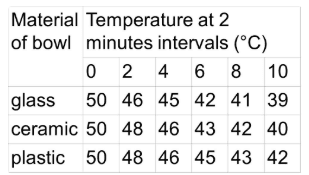Myths about teaching can hold you back
- Year 5
Insulating our homes and schools (non-statutory Climate Change & Sustainability)
I can find out about ways to insulate our homes and schools.
- Year 5
Insulating our homes and schools (non-statutory Climate Change & Sustainability)
I can find out about ways to insulate our homes and schools.
These resources were made for remote use during the pandemic, not classroom teaching.
Switch to our new teaching resources now - designed by teachers and leading subject experts, and tested in classrooms.
Lesson details
Key learning points
- Insulating buildings reduces the amount of fuel we need to keep them warm in winter and cold in summer.
- Other measures can reduce fuel costs, such as reducing the temperature we expect of our rooms.
- Temperature data can be collected around the school to reveal heat losses.
- Temperature data analysis can result in costed actions for children and adults to take to reduce heat losses.
- Fuel cost data comparisons will show whether actions have an impact.
Keywords
Insulate - If a material insulates electricity or heat it means it does not allow it to pass through it easily.
Fuel - A fuel is something that can be used to generate heat or light.
Temperature - Temperature is a measure of how hot something is.
Compare - We compare things by looking at what is the same and what is different.
Impact - The impact of something is the effect it has.
Common misconception
Insulation is used only to keep houses and other buildings warm.
Pupils will learn that insulation is designed to slow down heat exchange between buildings and the outside, keeping buildings warm in cold seasons or climates, or cool in warm seasons or climates.
To help you plan your year 5 science lesson on: Insulating our homes and schools (non-statutory Climate Change & Sustainability), download all teaching resources for free and adapt to suit your pupils' needs...
To help you plan your year 5 science lesson on: Insulating our homes and schools (non-statutory Climate Change & Sustainability), download all teaching resources for free and adapt to suit your pupils' needs.
The starter quiz will activate and check your pupils' prior knowledge, with versions available both with and without answers in PDF format.
We use learning cycles to break down learning into key concepts or ideas linked to the learning outcome. Each learning cycle features explanations with checks for understanding and practice tasks with feedback. All of this is found in our slide decks, ready for you to download and edit. The practice tasks are also available as printable worksheets and some lessons have additional materials with extra material you might need for teaching the lesson.
The assessment exit quiz will test your pupils' understanding of the key learning points.
Our video is a tool for planning, showing how other teachers might teach the lesson, offering helpful tips, modelled explanations and inspiration for your own delivery in the classroom. Plus, you can set it as homework or revision for pupils and keep their learning on track by sharing an online pupil version of this lesson.
Explore more key stage 2 science lessons from the Properties, changes and separating materials unit, dive into the full primary science curriculum, or learn more about lesson planning.

Equipment
Thermometers, free thermal image camera apps can be downloaded for free and used on electronic devices.
Content guidance
- Risk assessment required - equipment
Supervision
Adult supervision required
Licence
Prior knowledge starter quiz
6 Questions
Q1.Match the property to the definition.
soaks up water
does not soak up water
Q2.If you want something to stay warm, which of these types of materials would you wrap it in?
Q3.Which of these materials would you use to make a mat to protect a table from a hot saucepan?

Q4.Which of these would improve the thermal insulation properties of a material?
Q5.Which of these statements is true?
Q6.In an investigation to see which was the best at keeping warm soup warm, the temperature of soup was measured in three different bowls over 10 mins. Which bowl was the best at keeping the soup warm?

Assessment exit quiz
6 Questions
Q1.Match the season to the reason why fuel is used in buildings.
to warm them up
to cool them down


